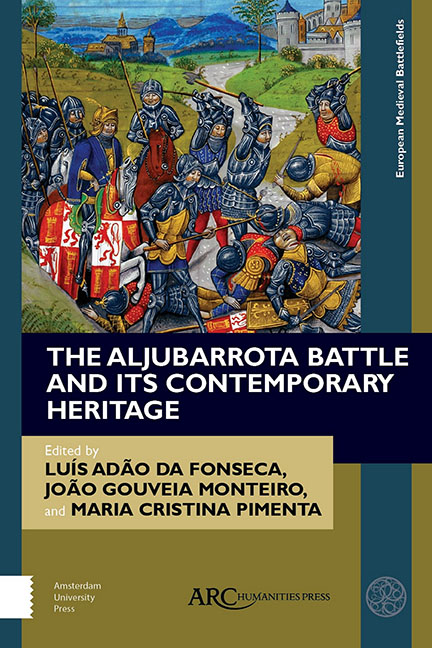Book contents
- Frontmatter
- Contents
- List of Illustrations
- Introduction
- Chapter 1 Before Aljubarrota
- Chapter 2 Fighting a Battle in the Middle Ages
- Chapter 3 The Decision to Fight at Aljubarrota
- Chapter 4 The Decisive Battle
- Chapter 5 Casualties and the Aftermath
- Chapter 6 Contemporary Memory and Myth-Making
- Chapter 7 The Legacy for Later Memories
- Chapter 8 The Battle of Aljubarrota Interpretation Centres
- Select Bibliography
- Index
Chapter 7 - The Legacy for Later Memories
Published online by Cambridge University Press: 20 November 2020
- Frontmatter
- Contents
- List of Illustrations
- Introduction
- Chapter 1 Before Aljubarrota
- Chapter 2 Fighting a Battle in the Middle Ages
- Chapter 3 The Decision to Fight at Aljubarrota
- Chapter 4 The Decisive Battle
- Chapter 5 Casualties and the Aftermath
- Chapter 6 Contemporary Memory and Myth-Making
- Chapter 7 The Legacy for Later Memories
- Chapter 8 The Battle of Aljubarrota Interpretation Centres
- Select Bibliography
- Index
Summary
THE CENTURIES AFTER the Battle of Aljubarrota presented different images of the event, but always exalted the victory and those involved. One example is the systematic celebrations planned in 1387 and known through chapter 48 of the Crónica de D. João I: “Let us endeavour now and always, in that week of the Assumption of the Blessed Virgin, that every city to make three processions, one after the other.” It was not difficult to maintain this form of commemoration. Indeed, “The procession commemorating the Battle of Aljubarrota was held annually throughout the fifteenth and sixteenth centuries,” not forgetting the many facets intertwined with the victory at Aljubarrota which everyone wished to celebrate. From later information, it was likely that, every year on August 14, this victory was celebrated in Guimarães, with a procession where the pelisse of King João I “was placed transversely along with the actual lance of the king, in sight of the people.”
Far beyond these ceremonies or scenes that transport us back to the battle itself (and to what, in political terms, it meant for the kingdom), we should remember what was at stake in this revival, year after year, of the event itself. This was not empty reenactment but conscious choices that, beyond how it favourably projected on the new dynasty, presented a universe full of virtualities.
Clever devices were not needed to retain memories that would never again leave the identity of the Portuguese, for there were ample reasons throughout the fifteenth century to keep the memory of King João I and his deeds intact in the “good memory” of his successors. Little wonder: during the century, tensions simmered between Portugal and Castile, as shown by the repeated attempts at agreements between both crowns (1411 and 1431) showing that, still in 1411, Aljubarrota did not seem decisive, and even in the 1430s the peace that was supposed to be definitive needed to be handled with care.
Late Fifteenth Century to the Habsburg Dual Monarchy, 1580
The policy undertaken by King Duarte, of which the writing of the Crónica de D. João I by Fernão Lopes is a good example, found remarkable continuity in his successors. Take the reign of King João II (1481–1495), a monarch deeply involved in a complex relation with Castile who stressed his interest in keeping alive the memory of the “Royal Battle.”
- Type
- Chapter
- Information
- Aljubarrota Battle and Its Contemporary Heritage , pp. 91 - 112Publisher: Amsterdam University PressPrint publication year: 2020



